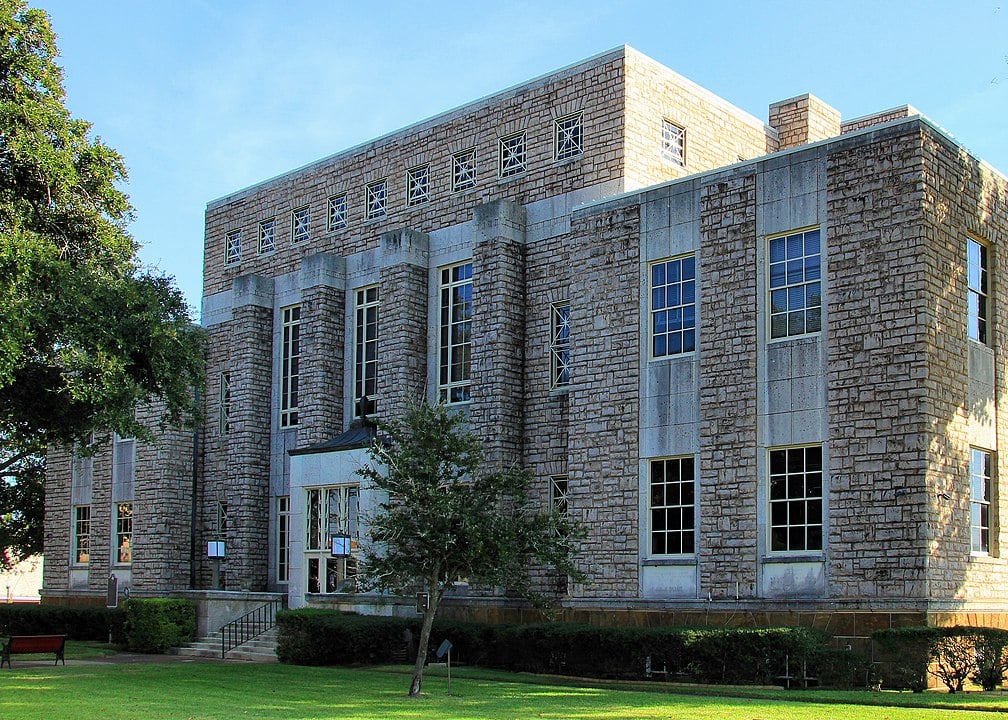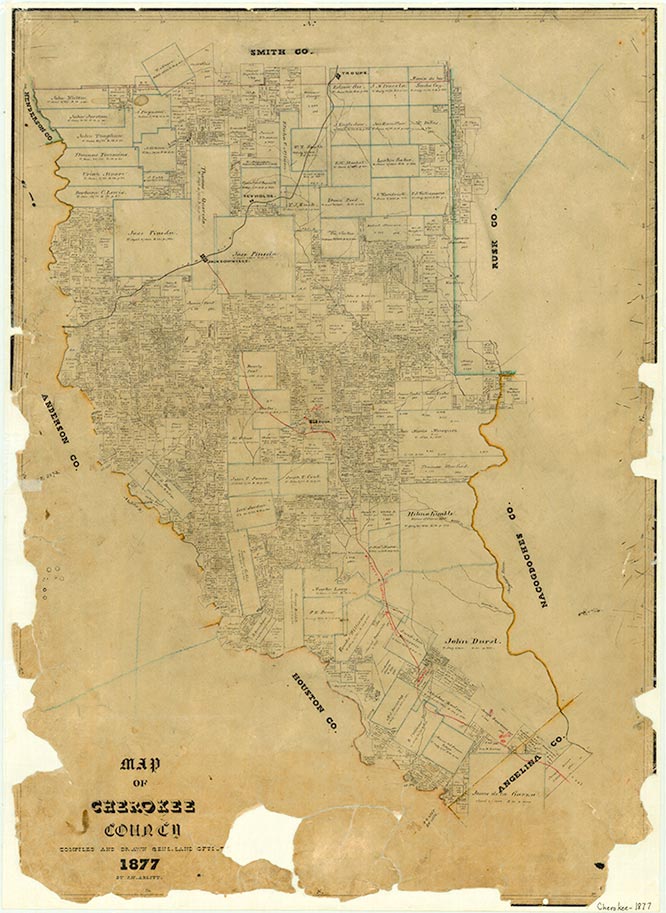Rusk

Rusk, Texas

Rusk, the county seat and second largest city of Cherokee County, is near the geographic center of the county at the junction of U.S. highways 69 and 84, State Highway 110, and Farm roads 241, 343, 752, 768, 1248, 1857, and 2972, 120 miles southeast of Dallas. The town was established by an act of the Texas legislature on April 11, 1846, which defined the boundaries of Cherokee County and called for the county seat to be named for Gen. Thomas Jefferson Rusk, one of the signers of the Texas Declaration of Independence. The law stipulated that the new county seat be located within three miles of the county's geographical center and named a five-member commission to determine the town's exact site. The commission originally wanted to locate Rusk at Cook's Fort, the largest settlement in the area near the junction of the Neches-Saline and Fort Houston roads. But after James Cook, the owner of the property, refused to sell the land, the commission opted for a 100-acre tract in the James Hundley survey, owned since 1839 by James F. Timmons. Timmons agreed to sell the property, situated three miles east of the Saline Road, for $600, and on April 13, 1847, the land was deeded for a townsite. At the time only John Kilgore and his family lived on the site; but within two years most of the families in and around Cook's Fort had moved the new town, and by 1850 Rusk reportedly had 355 residents. A post office was authorized on March 8, 1847, and the town's first church, the Cumberland Presbyterian Church, was organized by Rev. J. B. Harris in May 2, 1847. The first Masonic Lodge in the county, Euclid Lodge 45, was chartered on July 15, 1848. Like many early Texas towns, Rusk was laid out on a grid pattern based on the Shelbyville plan with a courthouse square in the center. The county court originally met in a crude log dogtrot cabin, but in August 1847 a contract was let for a two-room frame building with brick chimneys. The town's first jail was built the same year, and a larger frame courthouse was erected in 1849. A larger jail was built in 1855, and a brick building to house the county and district clerk's offices was constructed on the northeast corner of the square in 1859; the latter structure stood until it was razed in 1941. Most of the town's early businesses were clustered around the courthouse square. During the late 1840s and early 1850s Granville J. Carter and Theron L. Philleo opened general merchandise stores on the north side of the square; and E. T. Givens and F. T. Hayden operated a grocery and saloon respectively, on the west end. A city charter was approved in 1850, and a second charter was adopted in 1856 when the town's first mayor, E. W. Bush, was elected. The town's first school was taught by the Presbyterian minister J. B. Harris; in 1848 Cherokee Academy, a private subscription school, was chartered; and in 1851 another private school, the Stephens and Carter Academy was established. The latter institution, housed in an impressive two-story structure on Henderson Street, eventually developed into the Rusk Male and Female Academy, which survived into the latter portion of the nineteenth century.
During the 1850s Rusk grew rapidly, swelled by immigrants from the old South and Europe, including the British Isles, Germany, and Norway, as well as a sizeable African-American population. The town's growth slowed during the Civil War and early post-war years but rebounded in the 1870s with the coming of the railroads. In 1870 the International-Great Northern Railroad announced that it would construct a line across Cherokee County. But what at first seemed like salvation for Ruskians nearly turned to disaster when the railroad elected to bypass the town. Fearing the lack of a rail connection would doom their city, a number of prominent Rusk citizens incorporated the Rusk Transportation Company in May 1874 and raised money to build a narrow gauge wooden tram railroad to join the I&GN at Jacksonville. The line was opened in 1875, but its wooden rails soon proved inadequate, and after investors refused to supply additional capital for iron rails the railroad was auctioned off for $90.50 in 1879. In 1881 the property rights and franchises were purchased by the Kansas and Gulf Short Line Railroad, which completed a line from Tyler to Lufkin in 1885. The town's economy was further spurred by the construction of the Rusk Penitentiary between 1877 and 1883. In an attempt to make the facility pay for itself and exploit the area's rich iron ore deposits and timber resources, state officials constructed an iron foundry at the site. The operation, however, was never very profitable, and in 1910 the state suspended the iron operation. The penitentiary was later converted into the Rusk State Hospital.
Christopher Long | © TSHA

Adapted from the official Handbook of Texas, a state encyclopedia developed by Texas State Historical Association (TSHA). It is an authoritative source of trusted historical records.
Belongs to
Rusk is part of or belongs to the following places:
Currently Exists
Yes
Place type
Rusk is classified as a Town
Location
Latitude: 31.79774090Longitude: -95.14907700
Has Post Office
Yes
Is Incorporated
Yes
Population Count, 2021 View more »
5,537


